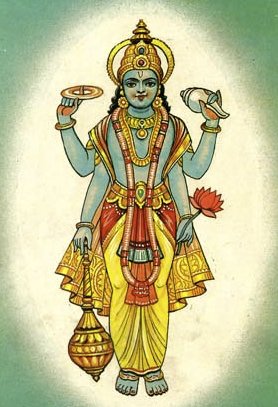Bhaktavatara, Bhaktāvatāra, Bhakta-avatara: 1 definition
Introduction:
Bhaktavatara means something in Hinduism, Sanskrit. If you want to know the exact meaning, history, etymology or English translation of this term then check out the descriptions on this page. Add your comment or reference to a book if you want to contribute to this summary article.
In Hinduism
Vaishnavism (Vaishava dharma)
Source: Pure Bhakti: Brhad BhagavatamrtamBhaktāvatāra (भक्तावतार) refers to:—An incarnation of Śrī Kṛṣṇa as a devotee. (cf. Glossary page from Śrī Bṛhad-bhāgavatāmṛta).

Vaishnava (वैष्णव, vaiṣṇava) or vaishnavism (vaiṣṇavism) represents a tradition of Hinduism worshipping Vishnu as the supreme Lord. Similar to the Shaktism and Shaivism traditions, Vaishnavism also developed as an individual movement, famous for its exposition of the dashavatara (‘ten avatars of Vishnu’).
See also (Relevant definitions)
Relevant text
Search found 4 books and stories containing Bhaktavatara, Bhaktāvatāra, Bhakta-avatara, Bhakta-avatāra; (plurals include: Bhaktavataras, Bhaktāvatāras, avataras, avatāras). You can also click to the full overview containing English textual excerpts. Below are direct links for the most relevant articles:
Shri Gaudiya Kanthahara (by Srila Bhaktisiddhanta Sarasvati)
Chaitanya Bhagavata (by Bhumipati Dāsa)
Verse 3.9.86 < [Chapter 9 - The Glories of Advaita]
Brihad Bhagavatamrita (commentary) (by Śrī Śrīmad Bhaktivedānta Nārāyana Gosvāmī Mahārāja)
Verse 2.3.65 < [Chapter 3 - Bhajana (loving service)]
Verse 2.3.104-106 < [Chapter 3 - Bhajana (loving service)]
Srila Gurudeva (The Supreme Treasure) (by Swami Bhaktivedanta Madhava Maharaja)
The Bona Fide Guru < [Chapter 1.1 - Śrī Guru Tattva and Śrī Guru Sevaka]